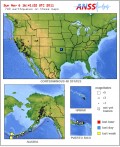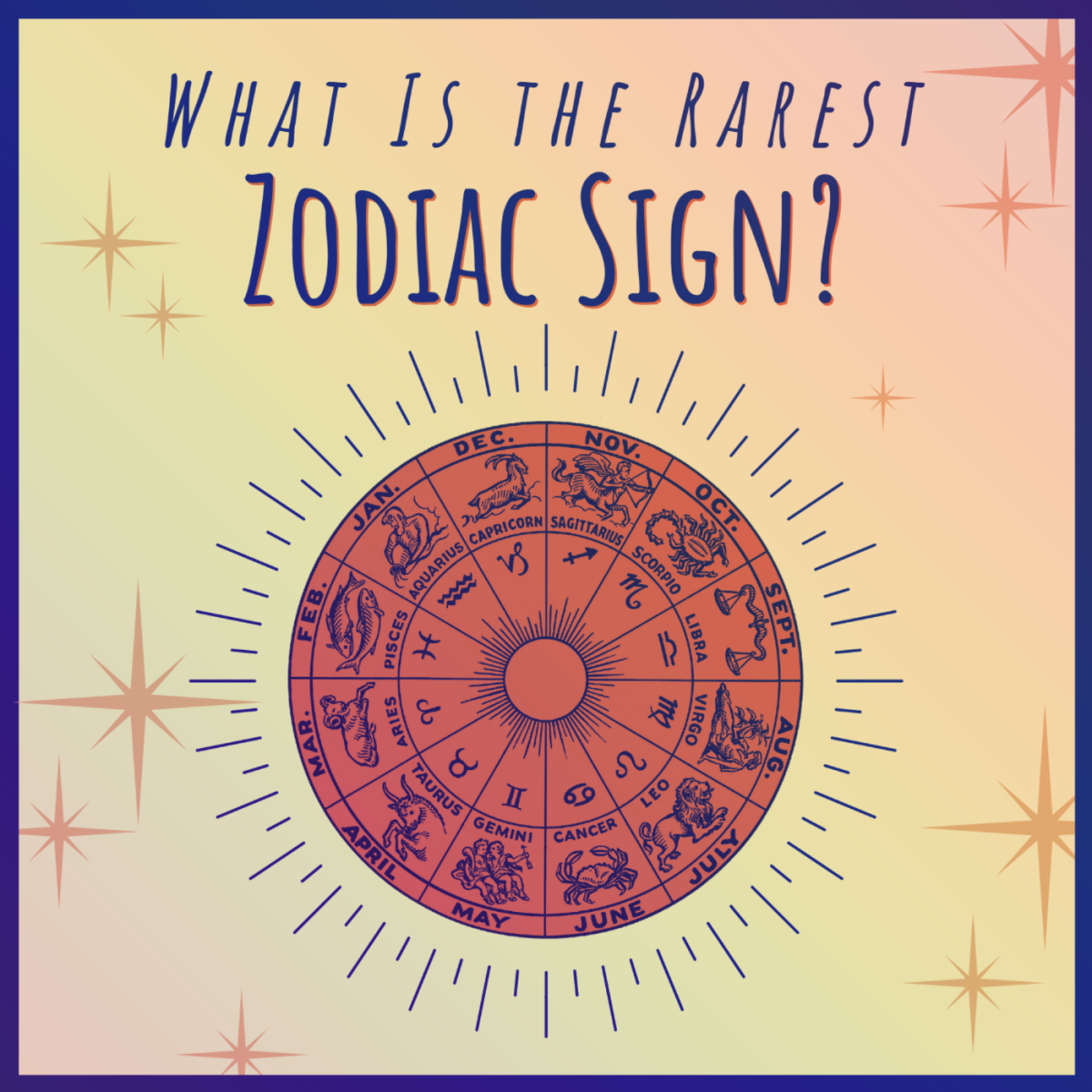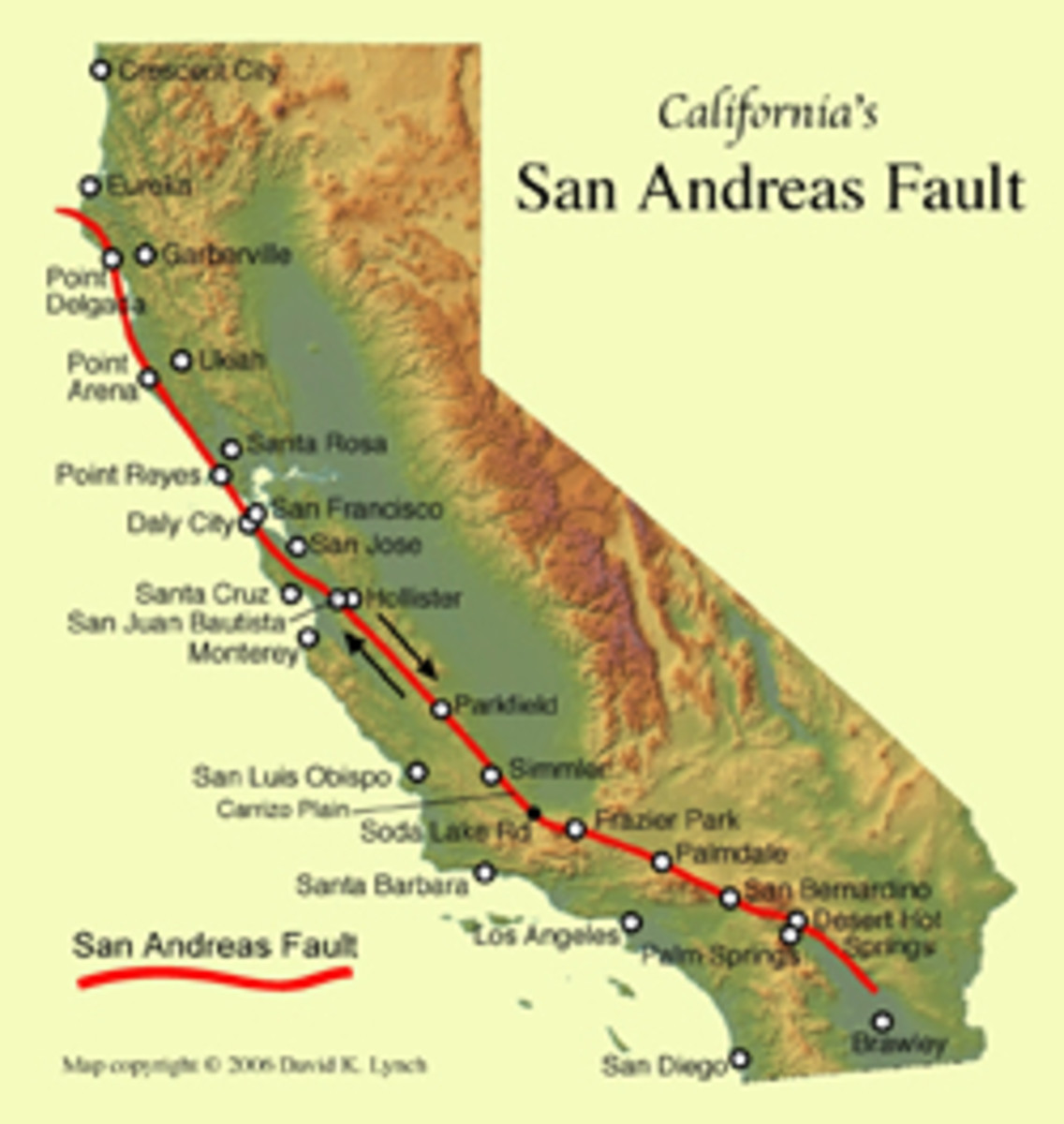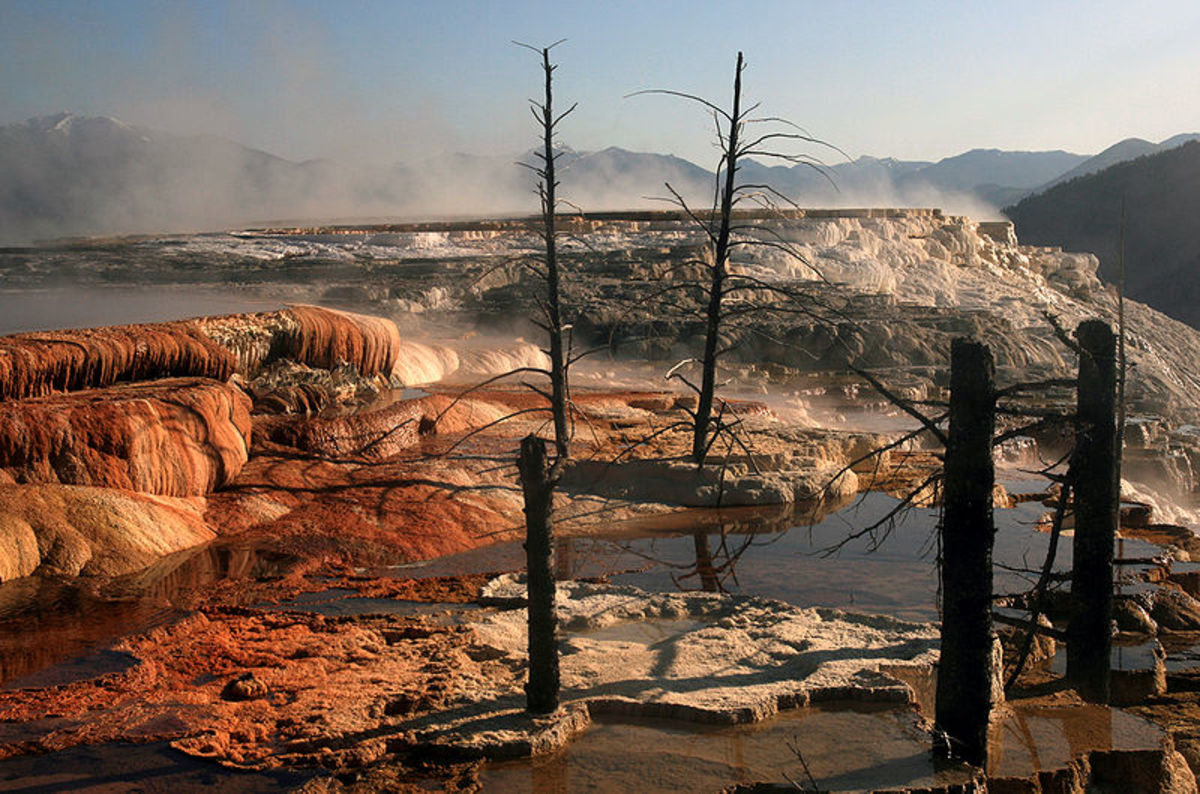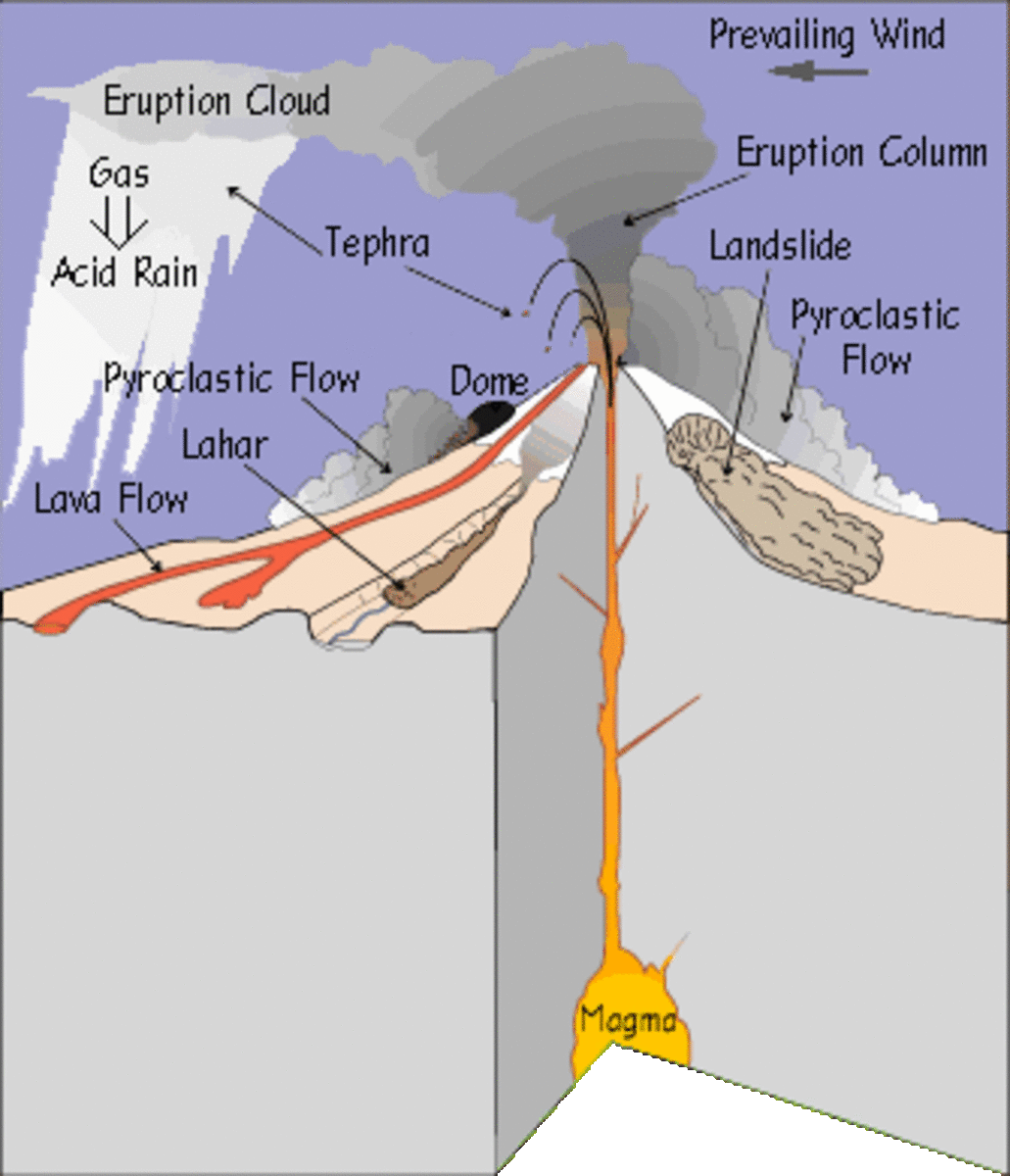Seismic Review and Forecast for October 2017
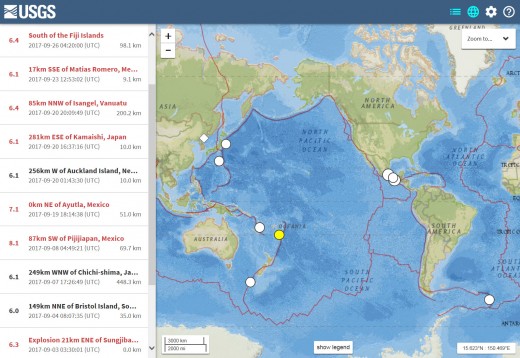
September Was "Expect the Unexpected" Month
September 2017 started off with a bit of a shock—early on the 3rd of the month, North Korea detonated a modest yield hydrogen bomb underground, causing seismographs to register a 6.3 magnitude seismic event. Their largest test before that came in at 5.3 magnitude.
Another surprise came five days later when, off the southern coast of Mexico, an 8.2 magnitude (Mw) earthquake struck that country. That event was only the second time since 1900 that they have experienced an earthquake of at least 8.1 magnitude (the first one being 85 years ago). It was strongly felt in far away Mexico City (due to the waves being magnified from it sitting atop an ancient lake bed), but they had plenty of warning due to an early warning system being in place. Mexico was the first government to initiate such a technical advance just six years after the disastrous 1985 earthquake of 8 magnitude which killed at least 9,500 people there (many locals saying it was actually more like two or three times that figure). The death toll from this latest great quake is just under 100; 78 in Oaxaca, 16 in Chiapas, 4 in Tabasco (these figures from the “Earthquake Impact Database”), and 1 in Guatemala).
The month had more surprises in store however. Ever since the deadly 1985 earthquake in Mexico City, the people there have dutifully participated in emergency earthquake drills to prepare for future earthquakes. Each year on that quake's anniversary of 19 September at 11am, local time, earthquake simulations begin. Unfortunately, this year on the same day and not long after the drills ended, there happened to be a magnitude 7.1 earthquake which occurred close enough to Mexico City to cause major damage. Many people did not react to the alarms which went off again before the arrival of the destructive waves. Over 350 people lost there lives from this second quake (at least 214 in Mexico City, 74 in the state of Morelos, 45 in Puebla, 13 in the state of Mexico, six in the state of Guerrero, and one in the state of Oaxaca; this per Wikipedia). Even more strange is the fact that most seismologists do not consider this last temblor to have been an aftershock to the 8.2 magnitude event which occurred between 11 and 12 days earlier (the two being too distant from each other for that to have been the case; although they were at about the same depth). The largest recorded aftershock to date of the magnitude 8.2 event was a magnitude 6.1 earthquake (which caused at least two deaths), occurring on the 23rd of September.
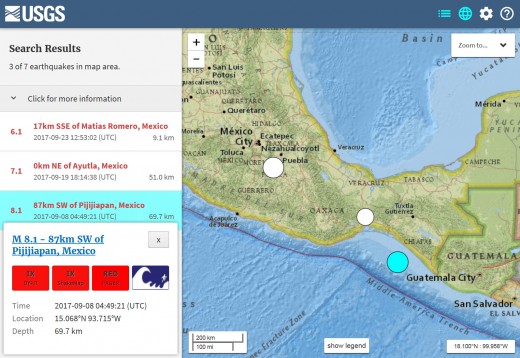
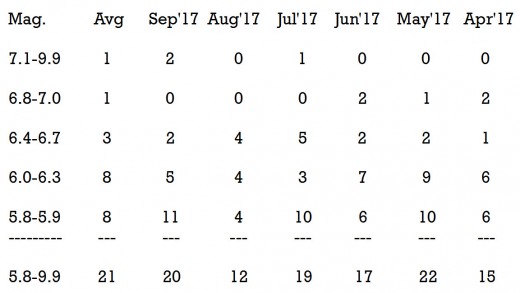
Putting Things in Perspective
If one looks at the breakdown of earthquakes in the range of 5.8 magnitude or larger for the month of September in 2017, one sees that the month yielded average results. If one looks at the energy released however, the results are many times greater than an average month. The month was also a study in contrasts. The most active period worldwide was the week following the magnitude 7.1 event in central Mexico, accounting for half of the 10 events of at least 6.1 magnitude which occurred during the month. If one looks at the first six days of the month, the last 4 days, and the 11 days between the magnitude 8.1 and 7.1 earthquakes in Mexico, there were no such events.
As for my last forecast, originally the 8th of September, or the day of the magnitude 8.2 Mexican earthquake (using Universal Time), was not included as a potential day for any worldwide event of at least 6.8 magnitude. But 36 hours before that great quake I posted an update to the article in the comments area and added one more day to the end of a three day window, putting the 8th in play. The date of the magnitude 7.1 Mexican quake on the 19th was inside a window that had been indicated in my original forecast. However, I had assigned 11 likely days (underlined) for such an event, 10 fairly likely days (non-underlined), and only 9 not likely days. As a result, since there were more days coming under potential astrological indicators than not, I had a better chance of getting two hits than no hits (there is on average two earthquakes of at least 6.8 magnitude each month).
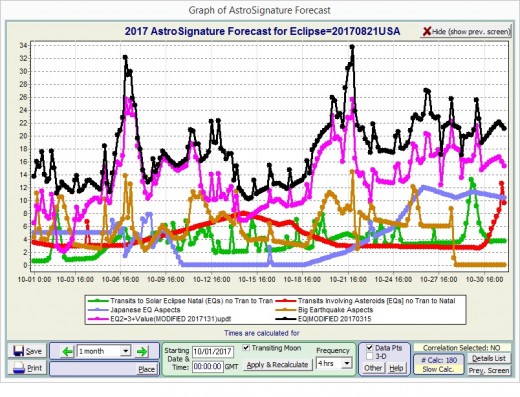
Forecast for October 2017
Instead of having 70% of the month containing likely days for earthquakes of at least 6.8 magnitude, as was the case for last month, October's breakdown looks like this: 7 likely days, 10 somewhat likely days, and 14 unlikely days. Thus, this time 55% of the month will contain windows that will be likely for what I consider to be significant seismic events (of at least 6.8 magnitude). As a result, since such quakes occur twice a month on average, there will be about a 50-50 chance that there will be one significant event inside the windows and one outside the windows. I of course am expecting at least two events inside the windows.
The most likely dates (underlined) for October 2017 are: 7 October, 11 October, 21 October, 25-26 October, and 29-30 October.
The somewhat likely dates for October 2017 are: 5-6 October, 8 October, 12-13 October, 20 & 22 October, 27-28 October, and 31 October.
The unlikely dates for October 2017 are: 1-4 October, 9-10 October, 14-19 October, 23-24 October.
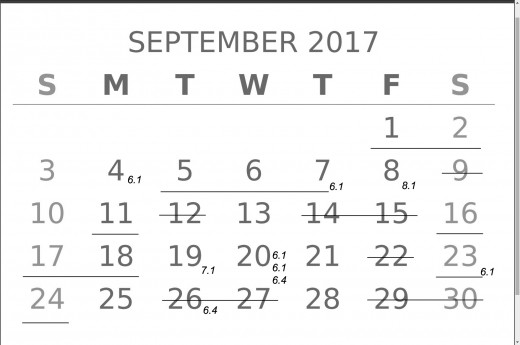
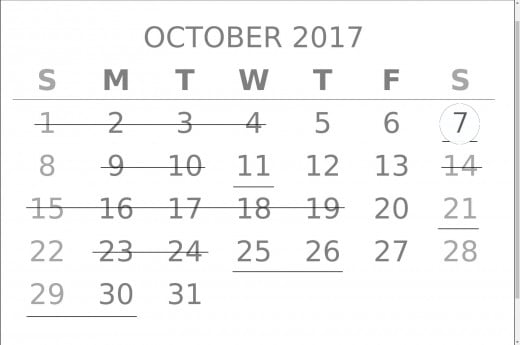
This article is accurate and true to the best of the author’s knowledge. Content is for informational or entertainment purposes only and does not substitute for personal counsel or professional advice in business, financial, legal, or technical matters.
© 2017 Joseph Ritrovato

